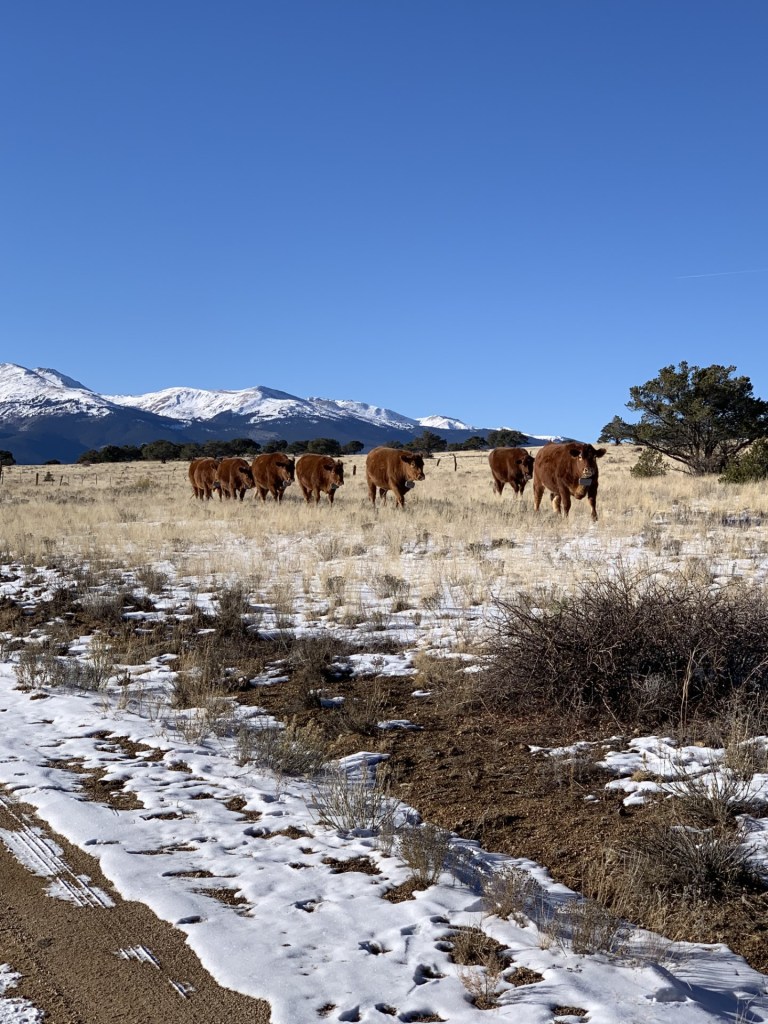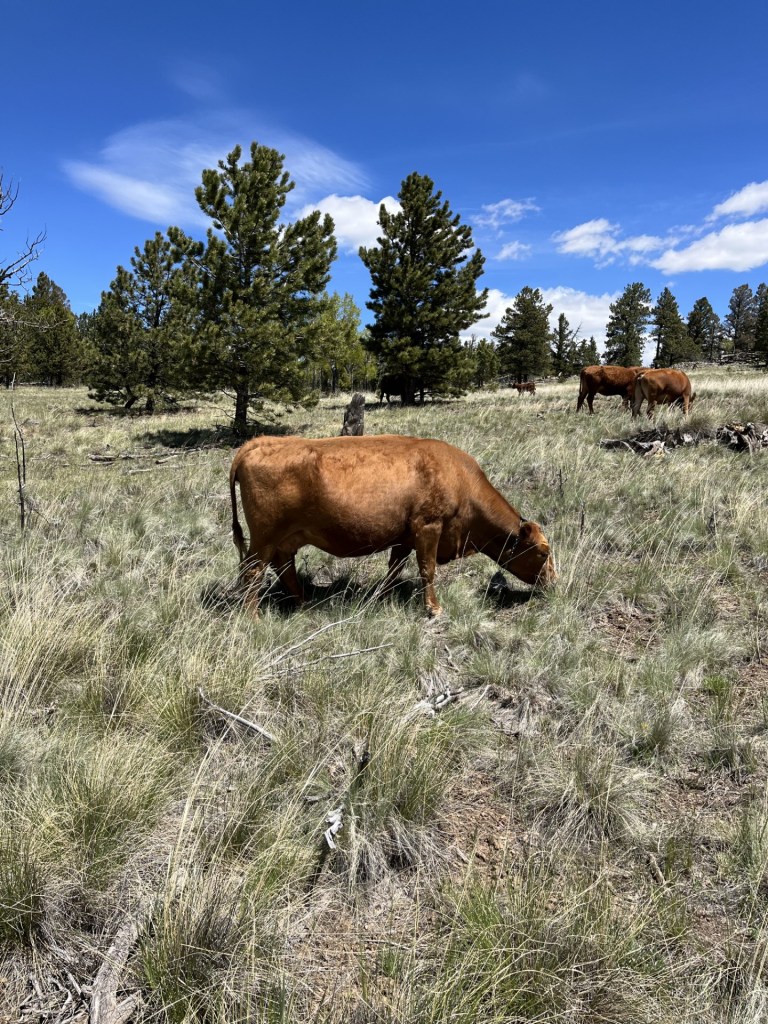
Vence Gives Ranchers the Bandwidth to Increase Stocking Density
“I’ve expanded my cow herd by a third since adopting Vence two years ago,” says Brice Lewis rancher who grazes cattle on Forest Service leases near Salida, Colorado. Over the past 35 years, he has slowly grown his herd from four cows to 150 cows. Virtual fencing technology has dramatically accelerated his progress.
“I now have the room to expand and the ability to make it function,” Lewis says. “Vence opens doors management-wise for how I can use my terrain. It allows me to better allocate my time and resources, increasing my bottom line.”
Changing what’s possible
Lewis ranches on the eastern, dry side of the Continental Divide, leasing summer and winter allotments from the state’s Forest Service. The land is diverse, featuring creek bottoms and riparian areas, timber and rough, hilly terrain.
“Because it’s harder country, cows do better if they grow up in it.” Lewis explains. “This isn’t an area where you can go out and buy a bunch of cows. I’m saving my own replacement heifers, which means growth has been slow.”
Vence expanded his opportunity for growth. “I’m at a stage where I’m growing my herd and trying to add more summer range. Vence has helped me add cattle and acres, and it’s paid off,” Lewis says.
“Before Vence, I’d look at the country and think it’d be nice to use that land. But I’d also recognize it’d be a management headache, requiring me to ride and push cows every other day to keep them where they belong,” he says. “Now, it’s safer for me to run more cows because I can better control where they are and plan for weather events.” Learn more about the advantages Vence can bring to your operation.
Strategic winter grazing
Lewis’ is also a brand inspector for Colorado who certifies livestock ownership for ranchers around the state, an experience that has given him the unique opportunity to learn from others. He was intrigued by a few ranchers who range out their cows in the winter and calve late, rather than bringing them in to put them on feed.
Lewis has had success with that strategy, in part because Vence has helped him make better use of his resources. For example, he’s currently taking advantage of the drier winter and grazing cows on higher-elevation ground. “I’m trying to use that feed first. And then when it does snow, I can move them to lower elevations with fresh resources,” he says.
“Thanks to Vence, I can utilize forage cattle normally wouldn’t use first,” Lewis explains. “It’s like a drought insurance policy that enhances my ability to plan around weather.”
Micromanagement of summer pastures
Lewis has also used Vence on a temporary summer grazing allotment from the Forest Service the past two years. Summer grazing is more intense from a management standpoint.
Ideally, land will be grazed for short periods and given long rest periods, which contrasts with cattle’s tendency to stay in certain areas for long periods. “You don’t want your cows to stay in one creek bottom for two months of the summer because they’ll damage plants and plant diversity,” Lewis explains. If left to their own devices, that’s just what cattle will do.
Thanks to Vence, Lewis was able to evenly graze two pastures in that summer allotment for six and a half months, which is a lengthy grazing period for Forest Service ground. He used the virtual fencing system to split one pasture into four segments and another into six sub-pastures. He moved cattle every two to three weeks.
“Closer control of my herd throughout the year means I’m able to stock it a little heavier, graze more strategically, and have better cow conditions coming out,” Lewis says. “It keeps planting seeds in my mind about what’s possible.”

Vence enables Colorado Rancher Brice Lewis to be strategic with his winter grazing, utilizing higher elevation forage and then moving animals when snow moves in.

Better allocation of resources with Vence has helped rancher Brice Lewis expand his herd.

This is typical terrain for summer grazing within Lewis’ summer Forest Service allotment in central Colorado. The elevation is high – near 10,000 feet.

Heat maps help ranchers identify over- and under-used areas for more strategic resource management.
